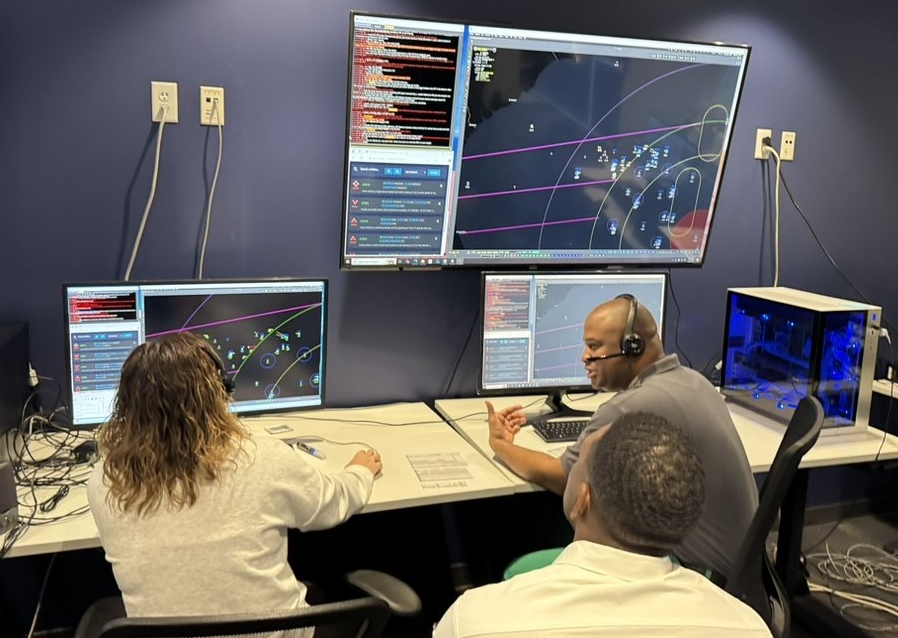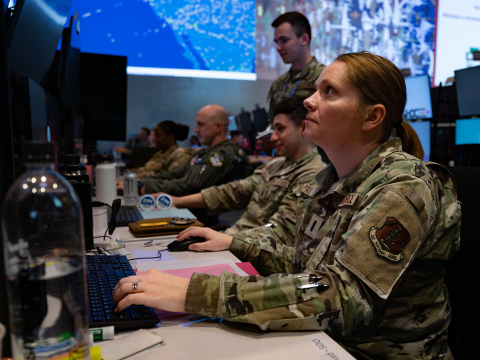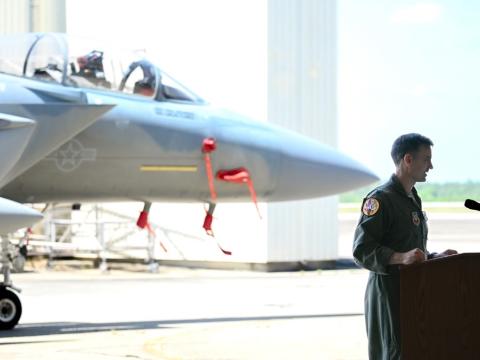Air Force Accelerates Battlefield Decisions With Human-Machine Teaming
The Department of the Air Force completed its first Decision Advantage Sprint for Human-Machine Teaming, or DASH, experiment at the Howard Hughes Operations Center in Las Vegas in April, Debora Henley, public affairs official for the 505th Command and Control Wing, announced Monday. The sprint aimed to test warfighters’ ability to improve their decision advantage with tangible software capabilities.
"The DASH experiment showed how machine support can dramatically reduce decision time and improve decision quality for air battle managers working in complex operational environments," said Col. Christopher Cannon, Advanced Battle Management System Cross-Functional Team (ABMS CFT) lead. “Battle management teams were exercising command and control decision advantage.”
Over two weeks, U.S. and Canadian warfighters worked alongside industry and Shadow Operations Center-Nellis (ShOC-N) software developers to prototype microservices aimed at improving decision-making in high-tempo battle management scenarios, according to Henley.
The ABMS CFT partnered with the 711th Human Performance Wing, Air Force Research Laboratory, Integrated Capabilities Command and 805th Combat Training Squadron, also known as the ShOC-N, to focus on the Transformational Model-Battle Management: Perceive Actionable Entity (PAE) function, which determines which actions are the best choice against an operational entity in terms of targeting, rescue and resupply, Henley’s press release explained.
Industry teams and a ShOC-N coding team built and tested code designed to help warfighters make decisions faster in a simulated high-pressure combat environment during the DASH experiment. The software developed for the sprint produced “battle effects,” which Henley described as battlefield-changing recommendations influenced by constraints like time sensitivity and rules of engagement.
Additionally, the tools were not pre-prescribed in format or interface, so developers could decide how the software made decisions and delivered information, the release stated.
“This is not just about accelerating data,” Cannon said in the release. “It’s about accelerating decisions. DASH lets us move beyond buzzwords and into real-world prototyping, software built around the actual decisions our warfighters must make under pressure.”
The DASH experiment was divided into two phases. In the first phase, battle managers executed a combat scenario without machine assistance. In the second phase, participants faced similar scenarios with prototype decision-support tools created during the sprint.
According to Henley, evidence from the experiment showed that the tools helped participants process information faster and more confidently. Additionally, little training was needed for participants to correctly use the tools.
“Our initial analysis illustrates that when the software developers’ tools were applied, not only did the human-machine team’s average decision-making time decrease seven-fold, but software ‘machines’ responded to more than twice as many dilemmas as the humans alone, and microservices generated three times the number of valid solutions, what we call ‘battle effects,’” Cannon said. “Machine answer errors were on par with human error, not bad for a week’s worth of coding. We demonstrated that machines absolutely helped, software services helped, but we also demonstrated that we can in fact build a software microservice that allows this to happen and gives us a more capable human-machine team.”
Cannon said the priority should be acquiring command and control software that helps operators transform data into better battle management because faster decision-making is key.
The ABMS CFT will host two more DASH events later this year, each with a different decision function focus, according to Henley.
“This is where theory meets execution,” said Col. Jonathan Zall, ABMS Capability Integration chief. “We’ve spent years defining what decision advantage looks like. DASH is about delivering it by building software that helps our operators act faster and smarter than our adversaries. As the Air Force continues to iterate, experiment and evolve, the human-machine team will remain at the heart of the department’s push for decision advantage."





Comments